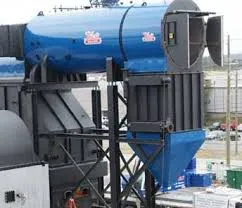พ.ย. . 29, 2024 19:07 Back to list
mold for aluminum
The Significance of Molds for Aluminum A Comprehensive Overview
Aluminum, a lightweight and versatile metal, has found extensive applications across various industries, from automotive and aerospace to construction and consumer goods. The effectiveness of aluminum manufacturing is heavily reliant on the quality of molds used in the casting process. Molds for aluminum play a pivotal role in determining the mechanical properties, surface finish, and overall quality of aluminum components. This article delves into the various aspects surrounding aluminum molds, their types, manufacturing processes, advantages, and the future trends in mold technology.
Understanding Aluminum Molds
Molds are tools used to shape molten aluminum into specific forms. With the casting of aluminum, the choice of mold can significantly impact the characteristics of the final product. We can categorize aluminum molds into various types, including sand molds, die molds, investment molds, and permanent molds, each serving unique purposes based on the desired attributes of the finished components.
Sand Molds Among the most commonly used molds, sand molds are made from a mixture of sand, clay, and water, allowing for flexibility and ease of use. Ideal for small production runs, they provide good surface finishes, though they might not be suitable for high-precision components due to their coarse texture.
Die Molds These molds are preferred for mass production. Made from hardened steel, die molds are designed to withstand high pressure and temperature, allowing for precise and rapid production of aluminum parts. This method is highly efficient for high-volume applications, such as automotive components.
Investment Molds Also known as lost-wax molds, investment molds are used for creating complex shapes with intricate details. They are manufactured from wax patterns that are coated in a ceramic material, allowing for high precision and excellent surface finishes. Investment casting is particularly advantageous for producing components with superior mechanical properties.
Permanent Molds These molds, typically made from metal, are reusable and suitable for high-volume production. They provide better dimensional control than sand molds and can produce components with better surface quality, making them ideal for parts that require high accuracy.
The Manufacturing Process
The process of creating molds for aluminum involves several key steps, including design, material selection, mold making, and finishing. The design phase encompasses the development of CAD models to visualize the final shape and ensure that all specifications are met. Material selection is crucial; molds need to withstand repeated mechanical and thermal stresses.
Once designed, the mold is fabricated through processes like machining, 3D printing, or casting, depending on its complexity and intended use. After the mold is created, it undergoes finishing treatments to enhance surface qualities and ensure proper sealing during casting.
mold for aluminum

Advantages of Quality Aluminum Molds
Investing in high-quality aluminum molds comes with numerous advantages
1. Precision Well-designed molds yield components with tight tolerances and high dimensional accuracy, crucial for applications such as aerospace and automotive.
2. Efficiency Molds enable faster production times, facilitating mass manufacturing without compromising quality.
3. Cost-Effectiveness Although the upfront cost for high-quality molds can be significant, the reduction in defects and increased production rates often lead to lower overall costs in the long run.
4. Versatility Molds can be customized to produce a variety of shapes and sizes, catering to different industry needs.
Future Trends in Mold Technology
As technology continues to advance, the future of molds for aluminum entails several emerging trends. One noteworthy development is the increased use of additive manufacturing (3D printing) to create molds. This approach allows for rapid prototyping, reduced lead times, and the ability to create complex geometries that traditional methods cannot achieve.
Moreover, advancements in materials science are leading to the development of more durable and heat-resistant mold materials, enhancing performance and longevity. The integration of artificial intelligence and machine learning in the mold design process is also anticipated to optimize designs and predict potential failures, thus improving efficiency in production.
Conclusion
Molds for aluminum are critical components in the manufacturing landscape, influencing product quality and production efficiency. As industries evolve and the demand for high-quality aluminum products increases, the significance of advanced mold technology cannot be overstated. Through a combination of traditional craftsmanship and modern innovation, the future of aluminum molds looks promising, paving the way for enhanced production capabilities and the creation of more sophisticated aluminum components.
-
Centrifugally Cast Iron Water Main Pipe | Ductile Iron Solutions
NewsAug.24,2025
-
Durable Cast Steel Concrete Pipe Mold Bottom Rings & Base Trays
NewsAug.23,2025
-
Centrifugally Cast Iron Water Main Pipe for Reliable Mains
NewsAug.22,2025
-
Durable Centrifugally Cast Iron Water Main Pipe
NewsAug.11,2025
-
Centrifugally Cast Iron Water Main Pipes for Reliability
NewsAug.10,2025
-
High-Quality Centrifugally Cast Iron Water Main Pipes
NewsAug.09,2025


